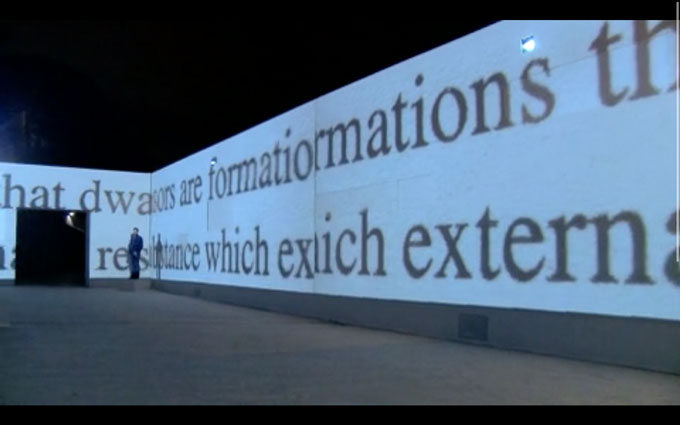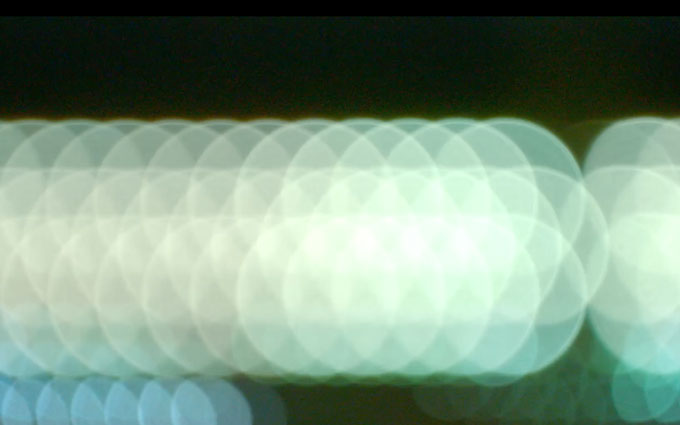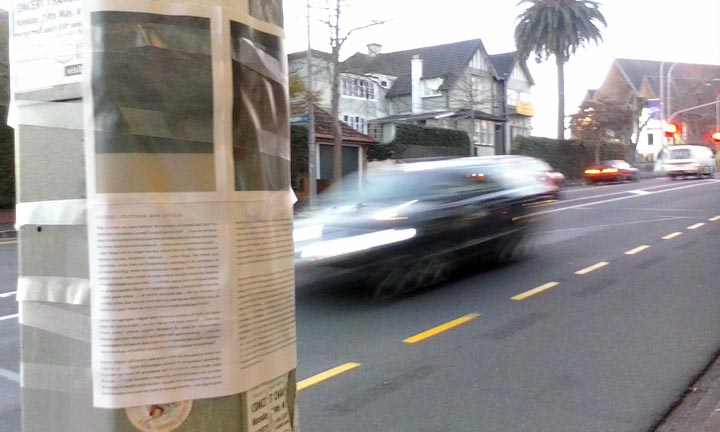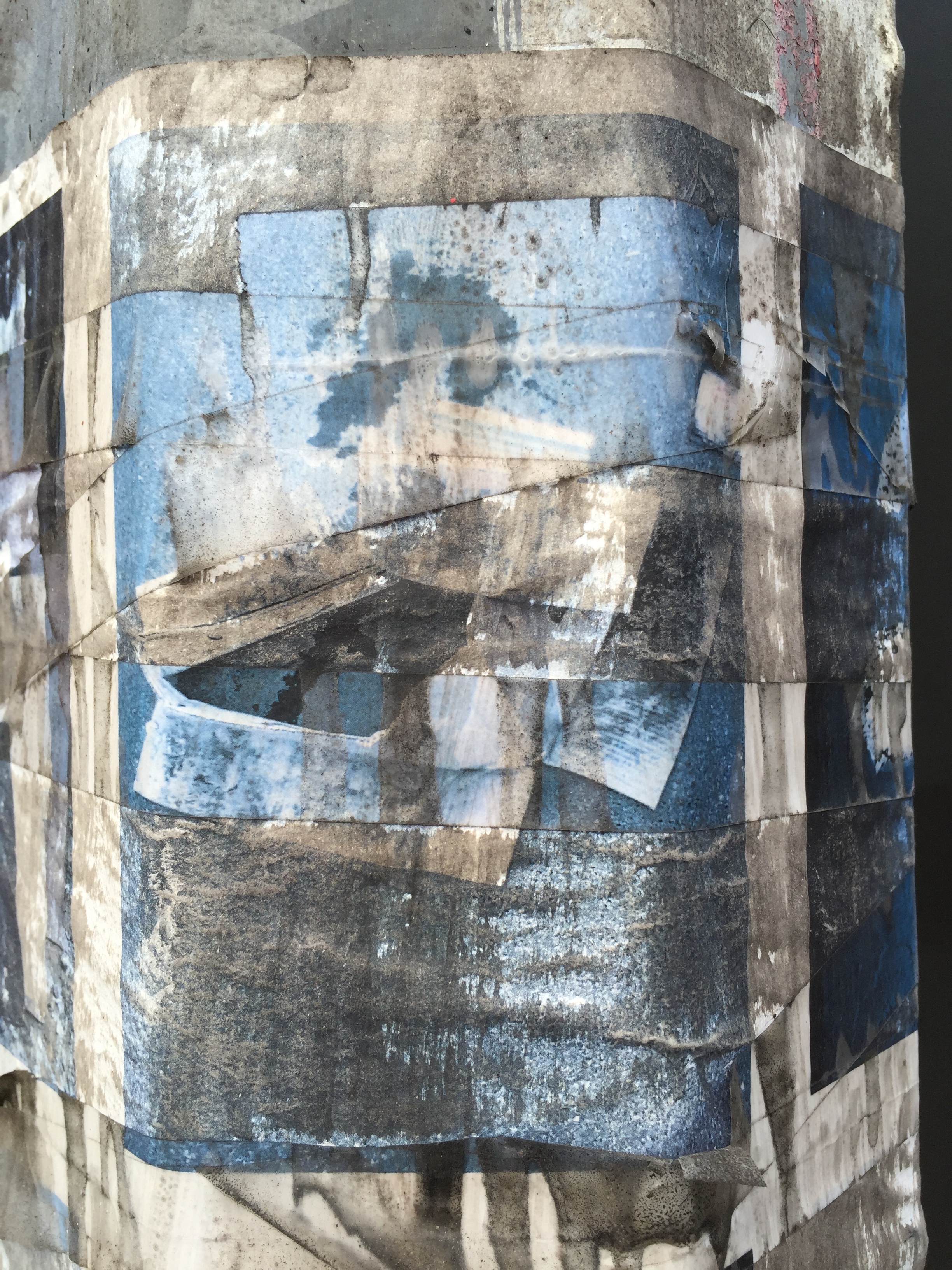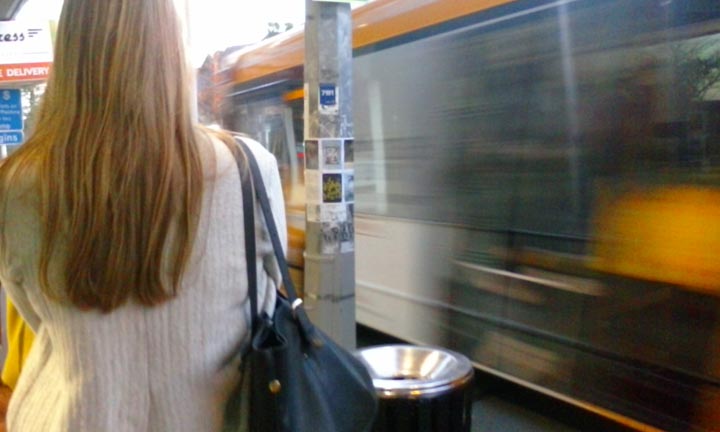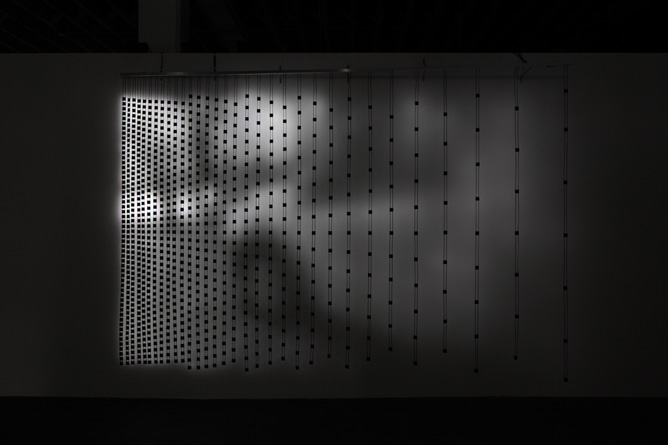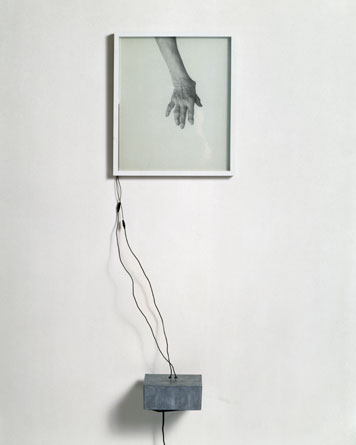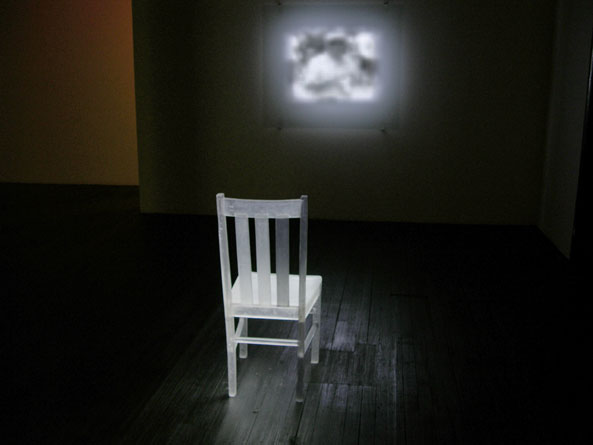shape / colour / modular
stand-ins / and other thoughts
data /
modular /
chatter /
fractured /
tangimoana_panels
in search of data
For centuries humans have been collecting data. Ever since the first scientists, cartographers and philosophers began to question the boundaries of their existence and to explore the possibilities of the unknown, humans have been collecting, classifying and documenting their observations.
Today we continue to explore the possibilities of pushing our boundaries further outward where we extensively collect the bits and bytes of our interactions. In a series of online projects, blended-theory aims to open up a dialogue around the function of data in the contemporary; who is collecting it, what is it being used for and how might it shape us as we unknowingly participate in a world immersed in the shift to a digital existence.
/ project . 01 encouraging a culture of : remix / sampling / sharing / zero copyright.
mediating spaces :
experimentations with dynamic images
An information shadow can be described as the "digitally accessible information” which is associated with a product or service such as its name, or its position in space and time. Objects or resources, which contain these data shadows are sometimes known as ‘spimes', a term coined by Bruce Sterling, from the contraction of the words ‘space’ and ‘time’.
Spimes’ have an ability to track their own existence throughout their lifetime and he believes that they are able to be “folded back into the manufacturing stream”. He sees them as “virtual images” which he suggests are most likely to be “a glamour publicity photo" which "is also deep-linked to the genuine, three dimensional computer designed engineering specifications of the object.”
Our desire to engage with our data driven society, where we create endless streams of information, has not only opened us up to the vastness of its possibilities but has also made us aware of our reliance on the patterns of modulation which are susceptible to the commodifying of content. We are incessantly consuming larger amounts of images, objects and knowledge and we are constantly reshaping content, re-creating new languages and re-appropriating old ideas.
The following documentation explores the possibilities of the dynamic image within the digital environment and attempts to expand on the notion of the ‘disruption of reality' as fiction and reality become an unbound image or an infinite experience.
INFORMATION SHADOWS : shift: the digital re-interpretation of the social
Text only version : swipe to navigate
modularity within networks :
JayZShot
in the dust of this planet
Ok ok ... probably a bit off topic and I am not sure how I got here but I thought it relevant, especially the idea of making connections, social-media and recent discussions. If you ever think nobody is listening, that nobody is looking or question what you are doing and why, here is a fascinating story from WNYC radiolab, where the hermeneutics of philosophy, pop culture and the contemporary embrace.
In_the_Dust_of_this_planet
It also left me wondering if our fascination with nihilism could be due to the lack of language for the contemporary or the increased use of machines (technology) to mediate order through knowledge, experience and relevancy; or the use of algorithms and statistics to track and trace us as our identities are being increasingly defined through our online interactions? ... those 'transactions' that occur in the everyday and exist in all aspect of our lives. Does it link into what we value, how we define desirability and the relationship we have with our sense of worth?
We talk nihilism with Eugene Thacker & Simon Critchley, leather jackets with June Ambrose, climate change with David Victor, and hope with the father of Transcendental Black Metal - Hunter Hunt Hendrix of the band Liturgy (retrieved from WNYC radiolab – hosted by Jad Abumrad)
non-logical axioms / machine images ...
a pair of skis
2014.09.13 – 17
hito_battlefield
bitflips and battlefields : Hito Steyerl
[image] Hito Steyerl, Is a Museum a Battlefield? was shown at the Adam Art Gallery Wellington - 4th July to the 10 August. http://www.adamartgallery.org.nz
If you have never considered a museum as a battlefield, consider again. In Hito Steyerl's lecture/video installation/performance Is the Museum a Battlefield, she gives a convincing presentation that might make you consider otherwise. Her ‘work’ traces the debris from a battlefield in the mountainous areas south of the city of Van, Turkey where the Kurdistan PKK has been fighting for independence from Turkey. Some of the items collected includes the ‘invisible’ shell casings of a 20mm Gatling gun made by General Dynamics.
Steyerl goes on to retrace the origins of these shells back to their manufactures which implicates various corporate and industrial giants in a technological ‘bit-flip’ linking them to the biggest museums in the world through architecture, software, the 'gentrification of culture' and the corporatisation and sponsorship of art institutions by some of largest weapons manufactures in the world.
Steyerl’s uses the term ‘bit-flip’ to describe the dual use of technology, where it can be both culturally and scientifically important but at the same time can act as the collaborator to humankinds atrocities. This usage resonated with my views on the ‘new and disparate interactions’ which we are enacting through our mobile devices. Technically, ‘bit-flip’ is not a word but it suggests a manipulation of sorts where a 0 becomes a 1, an off an on and vice-versa. For me, it conjures up images of multiplicities where intent is polyvalent, where technologies ‘flip back’ on themselves, masking one of their binate ambitions.
The following video is an edited version.
Documentation of Hito Steyerl's lecture "Is the Museum a Battlefield", first shown at 13th Istanbul Biennial. Steyerl’s new lecture, produced for the 13th Istanbul Biennial, takes as its departure point her March 2013 talk ‘I Dreamed a Dream: Politics in the Age of Mass Art Production’ and focuses on the arms industry, a phenomenon constantly re-conceptualized by the media through the regular flow of images. It asks the question of how a museum and a battlefield could be related. The question emerges when Steyerl follows the trace of an empty bullet casing which she found in the area where the mass grave of Andrea Wolf and her friends were located in Van, Turkey.
Converstations with Doug Aitkens : artist / interviewer / facilitator
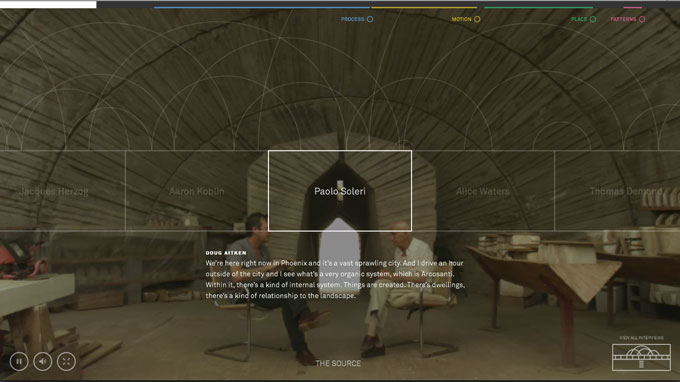 process | patterns | chaos | motion | place
process | patterns | chaos | motion | place
"Doug Aitken was born in California in 1968. He lives and works in Los Angeles and New York. Widely known for his innovative fine art installations, Aitken utilizes a wide array of media and artistic approaches to leads us into a world where time, space, and memory are fluid concepts [...] Aitken’s body of work ranges from photography, sculpture, and architectural interventions, to films, sound, single and multi-channel video works, and installations." Retrieved from http://www.dougaitkenworkshop.com/bio/
In this series of interviews Doug Aitken's talks with contemporary visual artists, musicians, architects and socially conscious individuals across a diverse range of topics, disciplines and practice. They discuss processes, inspiration and art making and of interest to me is his interview with artist Aaron Koblin and the underlying theme of patterns. Through out all of the conversations the presence of patterns and systems is touch on, whether they be organic in nature, constructed visually or assembled aurally they exist within all that we do which facilitates our connections to and with our social world.
Station to Station (http://stationtostation.com) is another Aitken's initiated project where a train ride "connect[s] leading figures and underground creators from the worlds of art, music, food, literature, and film for a series of cultural interventions and site-specific happenings. The train, designed as a moving, kinetic light sculpture, broadcasted unique content and experiences to a global audience [...]" which takes viewers on a "journey into the new cultural frontier." Retrieved from http://stationtostation.com/about/
http://dougaitkenthesource.com http://www.dougaitkenworkshop.com http://stationtostation.com
disinformation :
"... disinformation [...] is openly employed by particular powers, or consequently, by people who hold fragments of economic or political authority, in order to maintain what is established; and always in a counter-offensive role.
If occasionally a kind of disinformation threatens to appear, in the service of particular interests temporarily in conflict, and threatens to be believed, getting out of control and thus clashing with the concerted work of a less irresponsible disinformation, there is no reason to fear that the former involves other manipulators who are more subtle or more skilled: it is simply because disinformation now spreads in a world where there is no room for verification."
Debord, G. (1998). Comments on the Society of the Spectacle. London, UK: Verso
multiple frames /
recomposited : from code to cortex to cognition
As we navigate the contemporary our reliance on our devices to mediate between our reality and imagined environments has become more and more evident as we shift from an analogue interaction into a digital interface. Our new devices facilitate a transaction whereby they operate as the inputs and outputs to our everyday life. They function as both a gathering device and as the transmitters of information which not only manifests itself through the vast amount of data we consume but also through the treatment and proliferation of images in our contemporary media.
recomposited : from code to cortex to cognition
recomposited_cover2
extracts ... a dichotomy of mind where we are consumed by the sheer volume of its existence yet simultaneously define its very being through our participation.... As everyday life increasingly becomes immersed within the digital environment how might our codification affect our visual perceptions, cognitive processes and our rationality ... will this type of assimilation exclude our ability to interpret those unseen spaces, those moments which are composed through a process of intuition and experiment …
seeing machines
[gallery type="slideshow" link="file" ids="1361,1358,1357,1359"]
In navigating the social milieu of data and information we are prone to the loop of our own desires, ignoring the events that mark time, define our present and shape our past. Our archival data driven societies act as the registrars of our narratives and as we traverse these topologies we inevitably leave traces and fragments of our existence behind ... /
These bits and bytes of residue manifest themselves within the digital space, which embodies a divergent reality in that we become obsolete in the volume of its existence yet simultaneously define its very being through our participation. This bifurcation can be compared to the horizon which marks the boundary between grounded reality and the unseen future, expressing itself as an imaginary line, one that reflects the uncertainties of discovery, like Columbus searching for new lands, Cartesian maps or the genesis of mathematical formulae ... / Increasingly we are becoming reliant on our digital devices to interpret space, light, colour, and events for us and through this technology, which reframes and reinterprets what and how we see via a network of pixels, data and code, we are engineering the ‘seeing machines’ of our circumstances which not only defines how and what we see but also challenges our perception of the present and continually reconfigures our approach to the future.
As part of an ongoing research into the social and technological shift occurring within contemporary culture, these installations act as a form of documentation that investigates the transference we are enacting as we continually move from an analog existence into the digital interface ... /
cval12_seraching_cover
debris : flotsam and jetsam
What is it that we leave behind? the emotions of sorrow and loss? the physicality of presence, a smell? a touch, an embrace? ... / how do we know what it is that we leave behind and how do others resurrect those discarded bits, bytes, functions and intentions? ... / time erodes and memories fade ... / some things are no longer wanted, exiled from our blithe consumerist attitudes, banned, abolished, replaced ... / some things, like events and occurrences move from our fundamental reasoning to the periphery of our understanding, where connections are marginal, where our synapses carefully choose which bonds to make, which modules should be inserted and which should be discarded ... / a bit like space junk or residual matter that echoes Cauchy’s theory of complex analysis, a holomorphic function mapped under stress ... / or maybe, precisely that ... far too complex ... /
but... what of the data we leave ignored, that has no visible function, no commercial gain? where do those pixelated social couplings reside? .../ how do we aggregate a digital space to act as revealers of truth, the space where the machine and I, me and you, us and them coexist? ... / does this ‘virtual reality’ remove, neglect, disregard the need for responsibility, facilitate and defer rationality and compound understanding? ... / does the augmentation confuse or does it allow us to hide behind a code, a syntax, a digit of ideology, a hyperlink which offers us the promise of elsewhere?
Science, religion, philosophy, and politics have all attempted to reveal our truths for us ... / digital technologies attempt to democratize knowledge, to placate our need for acceptance and to insinuate where truth might be found ... / it also becomes a source for commodification and provides the illusion of wealth which further expands our concepts of hope, of our desire for acceptance and our need for homogenization ... / the digital space can also foster our ambitions for a more egalitarian existence and act as a companion, a catalyst for revolt and for dissent .../ it can be a subversive voice echoing millions of disenfranchised, a witness to the uprise ... / it represents itself in the hyperreal, the gloss of perfection, the glow of the screen and the flawless world of software, digital enhancements and predefined filters ... / it mirrors a conflicting environment, one which not only represents the oppressed and the objector but one that also acts as a conduit for the abandonment of liability and the deferral of accountability ... /
But maybe, things are far more innocent than they appear? like the sign that’s no longer there leaving a question as to why it was removed or what it may have said / or the condensation of air trapped inside a community notice inviting us to participate in an initiative which is no longer legible ... / or the discarded boxes, bits of wood, the off-cuts of structures which have lost their function ... / or maybe they mimic society’s flotsam and jetsam, a hello, a goodbye, a conversation, the hope for something new, something more immediate ... / or are these things far more real, like the scars that never heal or the words which linger long after the battlefield ... / or possibly a broken bit of code or the cadence of eloquent voices crushed, subdued ... / or the truth which lies in a sea of mistrust or the imagined which evaporates in the deserts of our minds eye? is it a mark of intent, a symbol of progress, a pixel exploded, a fragment of time? or perhaps it is just another image, just another byte for consumption, just one more bit of repetitive commodity, just one more digit that implicates us in our relation with the here and now ( / )
Benjamin Tiven and Triple Canopy
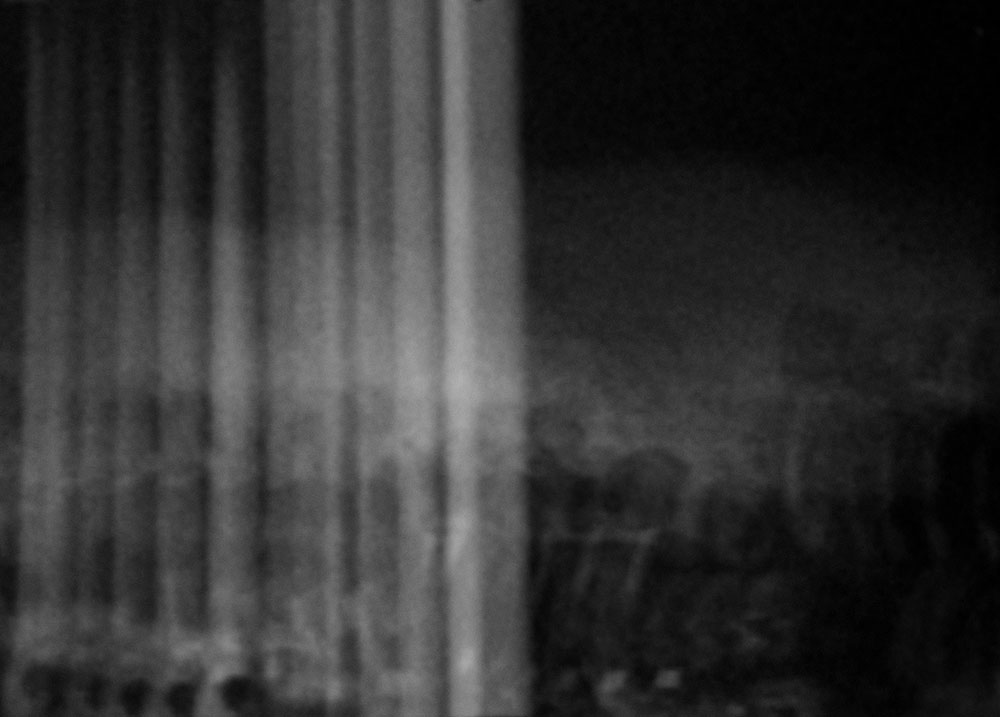 [image] Benjamin Tiven, Daniel arap Moi at a Public Presentation, Unknown Date, 2013, inkjet print 20" × 25".
[image] Benjamin Tiven, Daniel arap Moi at a Public Presentation, Unknown Date, 2013, inkjet print 20" × 25".
Pixels, root properties, illusions, patterns, grids and cities
Michael Cowan, Professor of Cognitive Neuroscience at Carnegie Mellon University and Benjamin Tiven, artist and contributor to the online magazine Triple Canopy, engage in a fascinating conversation, titled How we see in which they discuss the role of the brain in the understanding of the sensory world. The conversation revolves around issues that relate to our visual systems and the role of consciousness, evolution, experiential and scientific influences in shaping a visual understanding.
The interview is part of Common Minds, a series of essays which investigate the intricacies of the brain and the growth of neuroscience in contemporary society and science. Interestingly, Tiven titles this interview as a collaborative work and not an interview. This approach highlights the multiple roles that artists, such as Tiven, engage in and that any discourse is as valid a piece of art work as any painting, photograph, sculpture or digital creation. Below is a short extract from that conversation:
Our monitoring of the world is really much less continuous and accurate than we think it is. Experience is the conversion of energy into data. The project of all life is to correlate the interpretation with the energy source, since the better your ability to interpret reality, the more likely you are to survive and pass on your genes. Now, how close or causal is the relationship between the energy we experience and our interpretation of it—that's a different question. In fact, something like illusion or magic is based on a discrepancy between the information we're taking in and our interpretation. (Tarr, 2013 para 15)
Corrupted imagery and heads of state
Benjamin Tiven's approach to his art work is collaborative in nature and investigative in style. He deals with the longevity of images and the cross pollination of data from its analog forms into the digitised world as a need for survival. These manifest themselves as conversations that revolve around the issues of existence, memory and the way that stories are told. In A Third Version of the Imaginary, Tiven researches the archived footage, buried in the depths of the Kenyan Broadcasting Corporation, and the events surrounding the 1973 Kenyan Independence Day parade. He brings the archived footage back to life through a series of interviews and conversations which corroborate the grainy, choppy footage from a technological past.
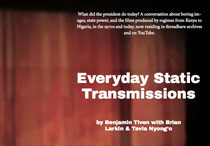
Employing the internet, through Triple Canopy, as a platform for the reinterpretation of these occurrences, the ‘conversations’ express themselves as investigative journalism which delve deeper into the politics of regimes past, the power of political imagery and the data that forms these events. Tiven describes an aspect of his work as the "increasing interchangeability between objects and data" and in one of these conversations with Brian Larkin, Larkin describes that a “breakdown shouldn’t be seen as the absence of something, but rather as the groundwork for something else coming into existence” (Larkin, 2014). This view exemplifies what Tiven’s work is about; that all things have data, past, present and future and in the retrieval and archiving of these events, new occurrences happen.
The digital space can now act as the repository of our actions. The increased capacity of storage through micro technologies and cloud depositories has expanded the realm of knowledge and the capacity for the instantaneous retrieval of information. The explosion of on-line magazines, blogs and social media sites has spurned an environment where all our experiences can be recorded and archived. This ever expanding environment can also be seen as the collective memory of our times.
But one day, these digital spaces might mirror the dusty archival rooms of past regimes, which means that the decoding of our digital past will require new technologies and new visionaries to retrieve them from their slumber. So, who will be responsible for the reinterpretation of these memories? Who will re-mix, loop, splice, cut and paste new story lines in an effort to uncover the deeper connections that occurred in the posting of our existence? As the digital space increasingly becomes controlled and commodified will it be the artist, the writer, the scientist or will we relinquish that responsibility to the powers that govern us? And will these interpretations represent the truth?
Reference:
Tarr, M. & Tiven, B. (2013). How we see. Retrieved from: http://canopycanopycanopy.com/contents/how-we-see
Larkin, B., Nyong’o, T. & Tiven, M. (2014). Everyday static transmissions. Retrieved from: http://canopycanopycanopy.com/contents/everyday_static_transmissions
Jim Campbell comes to Auckland
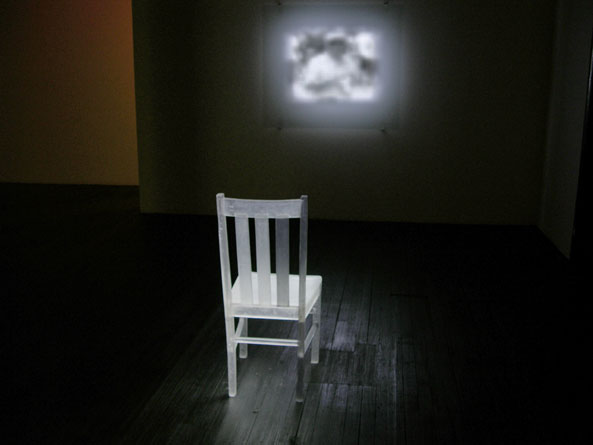 In October this year the Auckland Art Gallery Toi o Tamaki will present the hugely successful exhibition entitled Light Show, bringing some of the most respect international light artist working today to New Zealand. Of special interest to me is the inclusion of Jim Campell. I have been following his work for several years now and he is one of those artist who has inspired me to push my work into new territories.
In October this year the Auckland Art Gallery Toi o Tamaki will present the hugely successful exhibition entitled Light Show, bringing some of the most respect international light artist working today to New Zealand. Of special interest to me is the inclusion of Jim Campell. I have been following his work for several years now and he is one of those artist who has inspired me to push my work into new territories.
His works straddle the cusp of art and technology, comprehension and emotion. After the suicide of his brother, who had struggled with schizophrenia for years, Campbell produced Letter to a suicide in 1985, a 30 minute video of Campbell and his parents addressing his brother a year after his death. That video would be his first and last and since then he has been investigating human emotional states, perception and memory through the abstraction of light and the diffusion of pixels into a 'low definition' unit which express themslves through light, grids, objects, motion and metaphors.
http://youtu.be/-JsLgypYqCM
In 2012, Jim was presented with the 13th Annual Bay Area Treasure Award by the San Francisco Museum of Modern Art. In celebration of this honor, SFMOMA created [this] short film Jim Campbell: Transmitted in Light about his practice.
Retrieved from: http://www.jimcampbell.tv/news/
Cover image: Grand Central Station 2 –2009
projectformasquerade_2
Simon Starling – In Speculum at City Gallery, Wellington
There is no denying Simon Starling’s ability to tell a story; his works evoke the image of the pseudo-scientist raconteur, tweed jacket and all, explaining his latest inventions and in true Umberto Eco fashion, Starling is able to weave the most delicate of threads to present his audience with a narrative which is intricately connected, ingeniously assembled, carefully constructed and meticulously presented. There is a theatrical stage-like quality to his installations and as you approach from the foyer of the City Gallery, you are immediately asked to make some decisions in terms of where to start. There are no way-finding devices or clever prompts to guide you, and as you enter either one of the assigned ‘rooms’ you step into the magical world of Starling’s research and investigations, metaphors and symbols, double meanings and multiplicities.
His installations are traditional in the sculptural sense, three dimensional objects in the round but at times Starling steps into the role of film maker and director where the moving image is used as a technique to explain the genesis behind some of the works. These films become art works in themselves and they accompany the objects presented where they interconnect seamlessly within the larger story adding another layer to the complex narratives within Starling’s work. Film or video installations often can be a contentious medium for a gallery setting, but Starling’s ability to hold his audience through the use of the narrator’s voice, which acts as an authoritative link similar to a David Attenborough voiceover, connects the documentary with the narrative, the scientific with the fantasy, and teases his audience into his works through the universal bond of voice and language.
Read Morepattern recognition :: Marshall McLuhan
“... You cannot cope with vast amounts of information in the old fragmentary classified patterns. You tend to go looking for mythic and structural forms in order to manage such complex data, moving at very high speeds, so the electric engineers often speak of pattern recognition as a normal need of people processing data electrically and by computers and so on – a need for pattern recognition.”
McLuhan, M. (1968) Marshall McLuhan Speaks, Centennial 2011: Pattern recognition [Video file]. Retrieved from: https://marshall-mcluhan-speaks.com/soundbites/pattern-recognition
" ...what now matters most is not the production of new content but its retrieval in intelligible patterns through acts of reframing, reiterating, and documenting."
Joselit, D. (2013). After Art. Princeton, NJ: Princeton University Press. (p. 55-56)
“We see and comprehend things as patterns, as meaningful events, because of the way our brains operate and they are made for the interpretation of a certain type of information, a certain type of world.”
Donath, J (2007). The imperfect observer: Mind, machines and materialism in the 21st century. MIT Media Lab. Retrieved from http://smg.media.mit.edu/papers/Donath/TheImperfectObserver.pdf (p. 10)
"Personal experience is frequently rooted in collective and practical activities whose nature is stable, coherent, and patterned, although constantly, if minutely, in flux."
Coleman, G. (2013). Coding Freedom. Princeton, NJ: Princeton University Press. (p. 27)
“...participants can discern the relative complexity and orderliness of paintings or patterns after only a single glance afforded by a 50 msec [millisecond] exposure...”
Cupchik, G. (2011). The Digitized Self in the Internet Age. Psychology of Aesthetics, Creativity, and the Arts, 5(4) 318–328. (p. 321)
"The analysis of such massive data sets is an important and challenging task, since researchers and analysts are interested in patterns in the data, including associations, correlations or exceptions."
Keim, D. A., Schneidewind, J., Sips, M. ( 2006). Scalable Pixel-based Visual Interfaces: Challenges and Solutions. Retrieved from: http://graphics.stanford.edu/~msips/papers/scalable_pixel_exploration.pdf (Introduction)
Cover image: Still image from video interview, Old versus new assumptions (1960). Marshall McLuhan Speaks Centennial 2011. Retrieved from https://marshall-mcluhan-speaks.com/soundbites/pattern-recognition
Note: Apologies to Henri Dauman for posting a previous cover image with out his permission. Henri Dauman's career as a feature photographer for Life Magazine has seen him capture some of the most important cultural, political and iconic personalities of the 20th century. He is a master photographer with a unique eye for capturing those decisive moments which defined history. For a better insight into his work visit his web site at http://daumanpictures.com/.
a gap between rationality and obscurity
[gallery type="slideshow" size="full" ids="1101,1102,1103,1104,1105,1106,1107,1108,1109"]
How to preserve anonymity amongst social circles and some observations on social networking within online art magazines : A reinterpretation of Kiss and Make-up BRUSSELS 05.06.14 <#> artist I think I should know or think I would like to know, curators who I think I would like to know but will never know, art consultants who I would like to know what they do and others who know artists and curators and consultants whom I will never know. Doctored portraits of individuals from events I was never at but think I should be at or possibly think I just might like to be at. <#> Basel 2014. Images retrieved from http://www.artforum.com/diary/. All photo Julian Elias Bronner, unless stated otherwise. In collaboration with all participants whether they know it or not.
experiments in motion :
abandoned technologies : a lonely construct acts as a sensor, receiving inputs from an invisible source, air and wind activate its function . do these unseen forces intervene? if so, in what? are we complicit? what do we do with the things we leave behind? the things we have ignored? the objects which have been infected, lost their function? ( # )
a critical self analysis of process, intent and outcomes ...
Capturing images from the interface intrigued me and the possibilities that came from those investigations led me to think more about digital corruption/debris and the loss of clarity and intent; of the role of the artist as voyeur and documenter/observer and the possibilities that the screen provides, to not only extend and alter reality, but to also act as a catalyst for dissent and a vehicle for transporting change. // These moving images serve as a platform for further explorations into the interface and the unseen. They require further inquiry and they raise more questions than providing any tangible answers. The space that resides between intent and action, code and cortex is complex and within there lies a mass of unknown and untested possibilities which pass us by without a register or a trace.
preliminary research ::
A Scalable Image Processing Framework for Gigapixel Mars and Other Celestial Body Images, Mark W. Powell, Ryan A. Rossi† and Khawaja Shams, Jet Propulsion Laboratory, California Institute of Technology, {Mark.W.Powell, Ryan.A.Rossi, Khawaja.S.Shams}@ jpl.nasa.gov : http://ryanrossi.com/papers/SIPF-Mars-JPL-IEEE.pdf ( | )
Scalable Pixel-based Visual Interfaces: Challenges and Solutions. Mike Sips, J¨orn Schneidewind, Daniel A. Keim1, Heidrun Schumann2 1{sips,schneide,keim}@dbvis.inf.uni-konstanz.de, University of Konstanz 2 schumann@informatik.uni-rostock.de, University of Rostock . Germany https://kops.ub.uni-konstanz.de/xmlui/bitstream/handle/urn:nbn:de:bsz:352-opus-69112/Scalable_Pixel_based_Visual_Interfaces.pdf?sequence=1
IDL Reference Guide: IDL Direct Graphics Devices http://northstar-www.dartmouth.edu/doc/idl/html_6.2/Devices_with_Scalable_Pixels.html
Toolglass and Magic Lenses: The See Through Interface – Eric A. Bier, Maureen C. Stone, Ken Pier, William Buxton†, Tony D. DeRose‡, Xerox PARC, 3333 Coyote Hill Road, Palo Alto, CA 94304 †University of Toronto, ‡University of Washington : http://dl.acm.org/citation.cfm?id=166126
Association for Computing Machinery, Inc. (ACM). / CHI '95 Proceedings : http://www.sigchi.org/chi95/proceedings/top.html
















